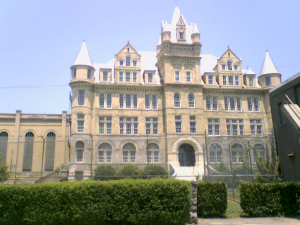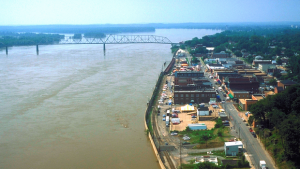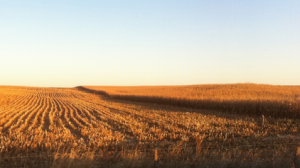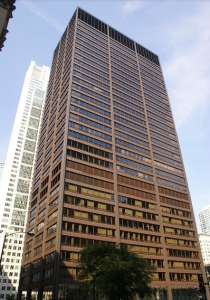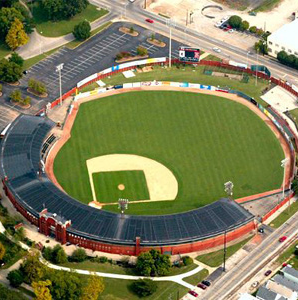Midwest Movies: Destinations from your Favorite Films
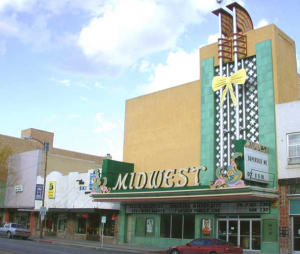
Films can carry an array of significance. Sometimes we use them as a means to escape, other times we use them as a way to socialize with our peers and then there are instances where we are drawn to them because we can relate to the story and characters. This week Detours takes a look at some of the most notable movies filmed in the Midwest.
Filmed in various locations in Tennessee and Arkansas, “Walk the Line” is a biographical depiction based on the early life and career of famous country singer Johnny Cash. Most of the film was shot in Memphis, however many of the well-known scenes were shot in Nashville at places like the Grand Ole Opry and the Tennessee State Penitentiary that acted as Folsom Prison. The film specifically focuses on Cash’s rise to fame, his struggle with drugs and his love affair with June Carter. The film was nominated for five Oscars at the Academy Awards including Best Actor for Joaquin Phoenix who portrayed Cash, and Best Actress for Reese Witherspoon who portrayed June Carter Cash, who went on to win the award. The film was given other numerous accolades and grossed over $185 million worldwide.
Based on the novel of the same title by Gillian Flynn, “Gone Girl” is a psychological thriller film about a missing wife, her innocent husband and the events that follow after she goes missing. The film outlines the background scenes of their marriage and depicts, according to Flynn, “that women are just as violently minded as men are and counters the notion that women are ‘naturally good.’” It is set in the Midwest, and was filmed primarily in Cape Girardeau, Missouri. The specific locations include the local courthouse, multiple shots of the downtown area and a property formerly known as Socials Cafe and Catering that became The Bar in the film. The location for “Gone Girl” was picked shortly after production began in 2013. The film was a commercial success and grossed over $368 million worldwide while also receiving critical acclaim. The lead actress, Rosamund Pike, was especially praised for her performance and was nominated for various awards including an Academy Award, a Golden Globe Award and a Screen Actors Guild Award.
Although the film’s plot is located in Nebraska, “Children of the Corn” was filmed in the Quad Cities, a region of four counties in northwest Illinois and southeast Iowa. The cities specifically highlighted were Davenport, Iowa, Princeton, Iowa, and Tipton, Iowa. The film is loosely based from Stephen King’s 1977 short story of the same name. The film highlights a couple who fight to survive a cult of murderous children who worship an entity known as He Who Walks Behind The Rows, which in prior years had manipulated all of the children in the town to kill every adult. The 2009 film has the same premise as the 1985 film of the same name. However, there are more “glammed up” scenes.
Filmed in Chicago and other global locations, “The Dark Knight” is the most successful film ever made in the Midwest. The film is the second part of director Christopher Nolan’s “Batman” trilogy with Christian Bale returning as the Batman and Heath Ledger playing the role of The Joker, a rising criminal fiend with a love of theatrical misconduct. The film was shot specifically at the Chicago Post Office Building, which the bank the Joker robs in the beginning of the movie, as well as the Richard J. Daley Center that was known in the film as Wayne Manor. Other locations around Chicago include the IBM Building, the Sears Tower, Millenium Park and Navy Pier. Many of these locations are featured throughout the movie, especially during the action scenes. Garnering over $1 billion worldwide, it received numerous accolades from critics regarding acting, aesthetics and overall editing. It was nominated for 8 Academy Awards and won 2, one of which was given posthumously to Heath Ledger for Best Supporting Actor for a performance that may have been the best of his career.
A League of Their Own (1992) –
Filmed in various cities in Indiana, along with cities in Kentucky and Illinois, “A League of Their Own” is a drama-comedy fictional film about the real-life All-American Girls Professional Baseball League that came into existence during World War II when men went to fight in the war overseas. The film was filmed at the famous Bosse field and the Illinois Railway Museum among other ballparks around Indiana and Kentucky. The film shows the struggles of the league, as well as the struggles of the female players. Starring Tom Hanks and Geena Davis, the film grossed $147 million worldwide and was #1 at the box office by its second weekend in theaters. The film was very well received, and in 2012 it was selected to be preserved by the Library of Congress for its “cultural, historical and aesthetic significance.”
These dramatic destinations make it plain: the Midwest has a wide variety of urban and rural landscapes and a multitude of sets to choose from for directors out to make the movie of their dreams.
